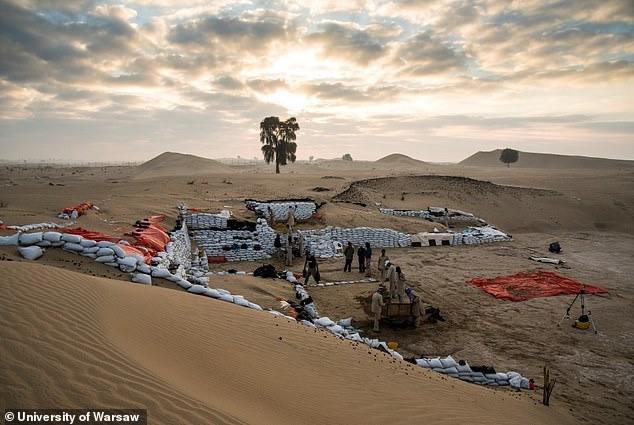
Ancient Desert City Reveals 5,000-Year-Old Secrets of a Forgotten Advanced Civilization
Ancient Civilization Uncovered Beneath Arabian Desert’s Sands
The Rub’ al-Khali desert, long dismissed as a barren wasteland, has revealed traces of a 5,000-year-old civilization linked to the legendary “Atlantis of the Sands.”
[Image 1: Aerial view of Rub’ al-Khali desert’s vast dunes, highlighting its harsh yet mystifying landscape.]
In 2002, Dubai’s ruler, Sheikh Mohammed bin Rashid Al Maktoum, spotted unusual dune formations and dark deposits while flying over the Empty Quarter. This led to the discovery of Saruq Al-Hadid, an archaeological treasure trove of ancient copper and iron smelting buried 10 feet beneath the sands. Spanning 250,000 square miles, the Rub’ al-Khali is the world’s largest continuous sand desert, yet cutting-edge technology has now unveiled its hidden past.
Myth Meets Science: The Search for Ubar
The site rekindles legends of Ubar, a wealthy city purportedly destroyed by divine wrath and swallowed by sand. T.E. Lawrence, the British explorer, famously called it the “Atlantis of the Sands.” Today, researchers from Khalifa University in Abu Dhabi are turning myth into reality using Synthetic Aperture Radar (SAR). This technology penetrates layers of sand, detecting buried structures, metal artifacts, and animal bones without disturbing the site.
[Image 2: Dr. Diana Francis analyzing SAR data, with radar visuals of underground structures.]
How SAR Unlocked the Desert’s Secrets
SAR emits energy pulses to map subsurface features, revealing ancient roadways, settlements, and “midden deposits” rich in cultural debris. Combined with AI, the team identified patterns of human activity. “Surveying this desert on foot was impossible. Satellite imagery and SAR were crucial,” said Dr. Diana Francis, head of Khalifa University’s ENGEOS Lab. Layers of gypsum, bedrock, and metal waste confirmed a sophisticated society thriving millennia ago.
A Thriving Ancient Hub
Findings suggest a complex civilization engaged in metallurgy and trade. Animal bones and metal tools indicate long-term habitation, while climate studies show the region once had lakes and lush periods around 5,000 years ago. These oases supported ecosystems, making life feasible in what’s now hyper-arid terrain.
[Image 3: Excavated artifacts, including metal tools and pottery, displayed at Saruq Al-Hadid.]
From Data to Discovery
The team validated SAR findings through field checks and existing records, prompting Dubai Culture to approve new excavations. “These unexplored regions hold immense cultural history,” Dr. Francis emphasized. Though much remains unknown, the discovery reshapes perceptions of Arabia’s ancient societies, proving the Empty Quarter was never truly empty.
[Image 4: Visualization of SAR imagery juxtaposed with ancient settlement reconstructions.]
Legacy of Resilience
For centuries, Bedouin nomads adapted to the desert through camel herding and storytelling—echoes of ancestral ingenuity. As technology peels back the sands, the Rub’ al-Khali emerges as a testament to human resilience, its buried cities rewriting history beneath the dunes.
With each radar scan, the “Empty Quarter” reveals it was once a land of life, innovation, and legend—an Atlantis reclaimed by science.
Word count: ~600
Image suggestions integrated to highlight key discoveries and technology.


